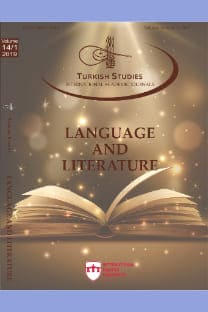JAPONYA ÖRNEĞİNDE ÇEVİRİ VE ÇEVİRİBİLİM ÇALIŞMALARI
1972 yılında James Holmes’un sunduğu “The Name and Nature of Translation Studies” adlı bildiriyle akademik disiplin olma yönünde ilerleyen çeviri etkinliği zamanla çeviribilim adını alarak çeviri etkinliğinin süreç boyutu kadar ürün ve işlev boyutu da önem kazanmaya başlamıştır. Günümüze kadar gerek kaynak gerekse de çeviri yoluyla oluşturulan çalışmalar aracılığı ile geniş bir çeviribilim literatürü oluşturulmuştur. Ancak ilgili literatür incelendiğinde kaynakların çoğunun Batı kökenli olduğu görülmektedir. Bununla birlikte doğu ve uzak doğuda da çeviribilim alanında kaynaklar da mevcuttur ancak bu kaynakların bile belli bir kitleye ulaşabilmesi için küresel bir dil olan İngilizce ile yazılması zorunludur. Buradaki asıl mesele ise bu değildir. Asıl mesele Batılı yazarların doğulu yazarlara oranla çeviribilim literatürüne daha çok katkı yaptığı gerçeğidir. Bunun bazı nedenleri vardır. Batı bir anlamda bilimsel gelişmeler açısından Doğu’dan daha gelişmiş durumdadır. Ancak çeviri tarihi insanlık tarihi kadar eski bir etkinlik olduğundan gerek bu etkinliğin bilimsel bir zeminde incelenmesine gerekse de çeviri süreciyle ilgili bilimsel yaklaşımlarda doğulu bilim insanları da yazdıkları kaynaklarla ve çalışmalarla alana destek vermektedir. Bununla ilintili olarak bu çalışmada uzak doğunun çeviri süreci ve çeviribilime bakışı Japonya örneğinde incelenmektedir ve Japonya gibi uzak doğu ülkelerinin gerek çeviri gerekse de çeviribilime bakışları ve bu bilimsel alana yaptıkları katkılar, geliştirdikleri kuram ve yaklaşımlar, ilgilendikleri metin türleri ve çeviri sorunları mercek altına alınarak bir literatür araştırması gerçekleştirilmiştir. Çalışmanın özellikle uzak doğudaki çeviri ihtiyaçları doğrultusunda çeviribilimin evrimsel yapısına destek olmak maksadıyla farklı ve yenilikçi kuramsal/uygulamalı çalışmaların gündeme getirilmesine katkı yapacağı umulmaktadır.
TRANSLATION AND TRANSLATION STUDIES IN THE JAPANESE CONTEXT
With James Holmes’s paper titled “The Name and Nature of Translation Studies” in 1972, the translation activity gradually initiated its attempts to become an academic discipline, and the product and function dimensions of the translation activity as well as its process dimension gained importance. Until today, a wide range of translation studies literature has been created both through original and translated sources. However, when the relevant literature is examined, it is seen that most of the sources are of Western origin. However, there are also sources in the field of translation studies in the east and the far east, but even these resources have to be written in English, which is a global language, in order to reach a wide range of audiences. But this is not the main issue here. The real issue is the fact that Western writers make more contributions to translation studies than Eastern writers. There are some reasons for this. In a sense, the West is more developed than the East in terms of scientific developments. However, since the history of translation is an activity as old as the history of the humanity, eastern scientists also support this activity on a scientific basis and with scientific approaches related to the translation process thanks to their own studies and sources in the field. In this study, the perception of the Far East on the translation process and translation studies are examined in the Japanese Context. Besides, the views of the Far Eastern countries such as Japan on the translation and translation studies, their contributions to this scientific field, the theories and approaches they have been developing so far, the text types they are interested in and specific translation problems are examined in this study. It is also expected that this paper will contribute to the emergence of different and innovative theoretical/applied studies in order to support the evolutionary structure of translation studies, especially in the direction of translation needs in the Far East.
___
- Benediktsdottir, Ásdis E. (2012), Japan and the West: A Journey through Time and Translation, Bachelor’s Project.
- Chan, Leo Tak hung (2016), “Japanization and the Chinese “Madman”: Triangulating Takeuchi Yoshimi's Philosophy of Translation”, Translation Studies, 9:1, 1-1.
- Hadley, James (2018), “The Beginnings of Literary Translation in Japan: an Overview”, Perspectives, 26:4, 560-575.
- Rossberg Nana Sato (2019), “Introduction to Constructing Japanese Translation Studies”, Japan Forum, 31:1, 1-3.
- Takeda, Kayoko (2012), “The Emergence of Translation Studies as a Discipline in Japan “, Translation and Translation Studies in the Japanese Contex (ed.Nana Sato Rossberg ve Judy Wakabayashi), Continuum, 11-32.
- Wakabayashi, Judy (2012), “Situating Translation Studies in Japan within a Broader Context “, Translation and Translation Studies in the Japanese Contex (ed.Nana Sato Rossberg ve Judy Wakabayashi), Continuum, 33-52.
- Wakabayashi, Judy (2019), “Japanese Translation Historiography: Origins, Strengths, Weaknesses and Lesson”, Translation Studies, 5:2, 172-18.
- Yazıcı, Mine (2004), Çeviri Etkinliği, Multilingual Yayınları, İstanbul.
- ISSN: 2667-5641
- Yayın Aralığı: Yılda 4 Sayı
- Başlangıç: 2006
- Yayıncı: ASOS Eğitim Bilişim Danışmanlık Otomasyon Yayıncılık Reklam Sanayi ve Ticaret LTD ŞTİ
Sayıdaki Diğer Makaleler
TÜRK DİLİ VE EDEBİYATI BÖLÜMÜ ÖĞRENCİLERİNİN OSMANLI TÜRKÇESİNE YÖNELİK GÖRÜŞLERİ
KAZAN-TATAR TÜRKÇESİNDE ÖRTMECE SÖZLER VE KULLANIM ALANLARI
DİN PSİKOLOJİSİ BAĞLAMINDA, İKİNCİ YENİ ŞİİRİNDE MİTOLOJİ
AHMED ŞEM’Î’NİN “HÜLÂSATÜ’L-AHLÂK” ADLI ESERİ VE AHLAKA DAİR GÖRÜŞLERİ
Ahmet DOĞAN, Seval Yinilmez AKAGÜNDÜZ
GÜMÜŞHANE İLİ VE YÖRESİ AĞIZLARINDA HAYVAN ADLARIYLA İLGİLİ SÖZ VARLIĞI
BİR MASAL KARŞILAŞTIRMASI: RAPUNZEL İLE MAHBUB-I DİLBER
KAZAK DİYALEKTOLOJİ SÖZLÜĞÜ’NDE ARAPÇA VE FARSÇADAN GEÇEN KELİMELERDEKİ SES OLAYLARI
MAKSİM GORKİ'NİN ANA ESERİ ÜZERİNDEN SOSYALİST REALİZM VE EDEBİYATTA PROPAGANDA-ANTİPROPAGANDA
MAKSİM GORKİ'NİN ANA ESERİ ÜZERİNDEN SOSYALİST REALİZM VE EDEBİYATTA PROPAGANDA-ANTİPROPAGANDA
